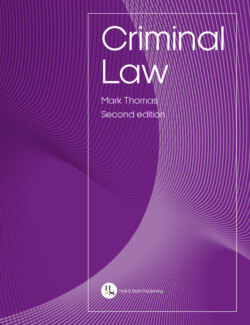Читать книгу Criminal Law - Mark Thomas - Страница 105
На сайте Литреса книга снята с продажи.
2.7.2.2Substantial cause
ОглавлениеThe first concept provides that the defendant must be the ‘substantial cause’ of harm. This would appear, at first sight, to be a high threshold, requiring the defendant to be the only, or at very least the main, cause of the end result. This, however, is not the case. Rather, in English law, the defendant need only provide a contribution that is ‘more than a minimal’ (R v Malcherek; R v Steel [1981] 2 All ER 422). The phrase ‘more than a minimal’ has been expressed in many ways in different cases. For instance:
•In R v Kimsey [1996] Crim LR 35, Auld LJ upheld the trial judge’s direction to the jury in which he said that the jury do not have to be sure that the defendant’s conduct ‘was the principal, or a substantial cause of the death, as long as you are sure that it was a cause and that there was something more than a slight or a trifling link between the [conduct] and the [end result]’ (emphasis added).
•In R v Cheshire [1991] 3 All ER 670, Beldam LJ explained the requirement being that ‘the defendant’s acts can fairly be said to have a made a significant contribution to the victim’s death’. According to Beldam LJ, ‘significant contribution’ means ‘more than negligible’.
Both of these are simply different ways of explaining the principle that the defendant’s conduct must be more than a minimal cause; any contribution that is less than a minimal will be excluded under the principle, and the defendant will not be liable for his actions.
Let us consider the following example which may assist in our understanding.
example
Jack pricks Jill’s finger with a pin. The pin-prick breaks both layers of the skin (the dermis and epidermis) and causes Jill to bleed. Andy then stabs Jill in the chest. Jill is taken to hospital but dies a few hours later.
Both Jack and Andy have wounded Jill. According to Moriarty v Brooks (1834) 6 C & P 684, a wound is a break in both layers of the skin. Both Jack and Andy have done exactly that but on varying levels of severity. However, Jack’s conduct in pricking Jill’s finger will be deemed insignificant and trivial (in relation to murder) despite its status as an effective wounding. Andy’s conduct is substantial whilst Jack’s conduct is likely to be excluded as de minimis. As such, Andy will be liable for Jill’s death, whereas Jack will not.
